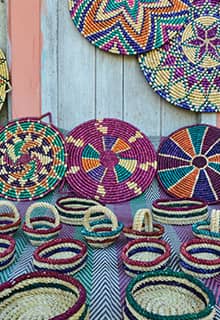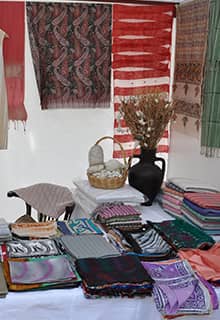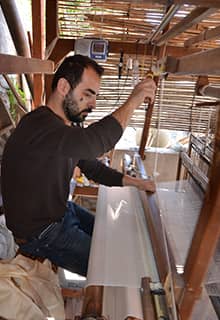

touch
Hatay
Basket Knitting
Basketry is a knitting and handicraft made by making use of thin shoots of trees and non-lignified stems of plants. In Hatay, where cereals such as wheat, barley, rye and oats are grown, the stems of these plants are used in vegetal knitting. In addition to this, reeds grown on the water's edge, especially reeds around the Asi River, are also used in knitting.
The most common wicker knitted items are bags, plates, cirem, boards, half plates, and boats. It is possible to see the artist's signatures in the elegance, color, texture, pattern and shape varieties of basket weaves.
Sericulture
Efforts are carried out to keep sericulture, which was carried out in almost every house in most of the villages of Samandağ and Harbiye in the past, alive. In Hatay, silk products are woven on wooden looms by tying and stretching wooden sticks and pebbles to the ends of warp threads.
Coppersmith
Although aluminum products are more common today, they cannot replace copper. Especially in Hatay cuisine, Copper is an important tool. The indispensable material of many delicious meals you will eat in Hatay are copper utensils. The craftsmen who continue this tradition in Bakırcılar Çarşısı (Bazaar), which is located in the Uzun Çarşı (Bazaar), produce not only kitchenware but also gift items.
Serpentine Stone Work
The black serpentine stone identified with Antakya has been produced in the region for more than 2000 years. Serpentine products found in Antakya throughout history are exhibited in the Archeology Museum. Thanks to its easy processing and beautiful appearance, gift products produced with serpentine stone that can be used daily can be found in Hatay. Products such as statues, necklaces, candle holders, vases can be given as examples.
Glass Products
The area around Antakya is one of the places where glass was first discovered. Glass products produced with indigenous green glass find their place in the kitchens of many houses.








